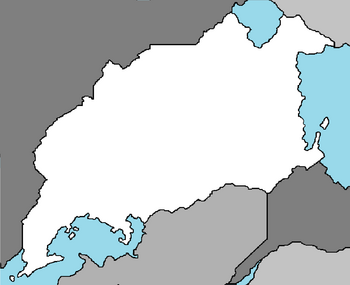Durnstaal: Difference between revisions
Pretzelbomb (talk | contribs) |
Pretzelbomb (talk | contribs) (→Cities) |
||
| Line 102: | Line 102: | ||
===Language=== | ===Language=== | ||
===Cities=== | ===Cities=== | ||
'''Durnen:''' Capital city of the Federated Union of Durnstaal, it is the nation's second largest city with a population of 8.5 million residents. Location of the Durnian Royal Family's home of Duern Keep and the Kolspatz where the Central Assembly meets to vote on legislation. The city itself dates back to ancient times when it was known as the city-state of Duern and architecture from that period can still be found alongside modern structures, most notably in the case of Duern Keep which has stood for over 2000 years. The city overall is modern but many of the newest buildings are several decades old giving the city a dated appearance. The city is mostly Orthodox Christian but has several distinct islamic communities, many with family ties to neighboring Saudi-Jiddiya. The city is the third largest port in Durnstaal and the largest Durnian port on Lake Gravenna handling 78% of all Durnen trade on the lake. The city welcomes 42% of all immigrants to the nation although many choose to head further inland rather than stay in the city. | |||
==Politics== | ==Politics== | ||
Revision as of 20:47, 26 August 2020
Federated Union of Durnstaal | |
|---|---|
|
Flag | |
 | |
| Capital | Durnen |
| Government | |
| Date format | mm-dd-yyyy |
The Federated Union of Durnstaal, most commonly known as Durnstaal, is a nation in the Coalition of Crown Albatross located on the continent of Adula, bordered by Saudi Jiddiya.
History
Geography
Durnstaal's geography is overall mountainous with large changes in elevation between the north and south of the nation. The climate becomes drier the closer to the center of the nation you travel with several small patches of desert along the northern face of the Kalater mountains. The nation experiences rainfall in two separate systems, the north fed by Lakes Gravenna and Lovap and the south fed by the Albarine Sea. The lowest elvation is -2m above sea level and the highest is Drukov Point which sits 1,742m above sea level.
Durnstaal's geography varies across the nation and is generally divided into four distinct zones: The Cohn Lowlands, The Novada Highlands, The Stretch, and The Coastal Expanse. The Cohn Lowlands include the rolling hills and dry grasslands bordering Lake Gravenna and Lake Lovap in the northeast. The Novada Highlands include the dense forests and elevated plateaus that run along the western border. The Stretch encompasses the Kalater mountains and the habitable valleys and hills that run along its northern edge. The Coastal Expanse includes all subtropical or near-subtropical Durnstall lands south of the Kalater mountains.
Demographics
Religion
Language
Cities
Durnen: Capital city of the Federated Union of Durnstaal, it is the nation's second largest city with a population of 8.5 million residents. Location of the Durnian Royal Family's home of Duern Keep and the Kolspatz where the Central Assembly meets to vote on legislation. The city itself dates back to ancient times when it was known as the city-state of Duern and architecture from that period can still be found alongside modern structures, most notably in the case of Duern Keep which has stood for over 2000 years. The city overall is modern but many of the newest buildings are several decades old giving the city a dated appearance. The city is mostly Orthodox Christian but has several distinct islamic communities, many with family ties to neighboring Saudi-Jiddiya. The city is the third largest port in Durnstaal and the largest Durnian port on Lake Gravenna handling 78% of all Durnen trade on the lake. The city welcomes 42% of all immigrants to the nation although many choose to head further inland rather than stay in the city.

